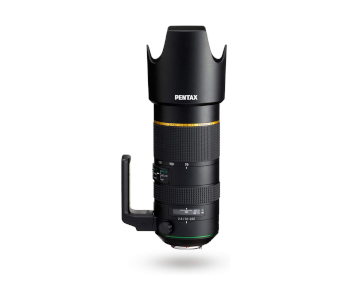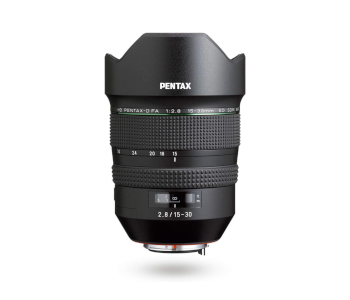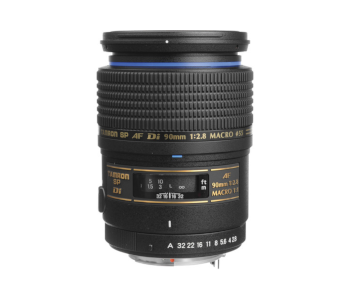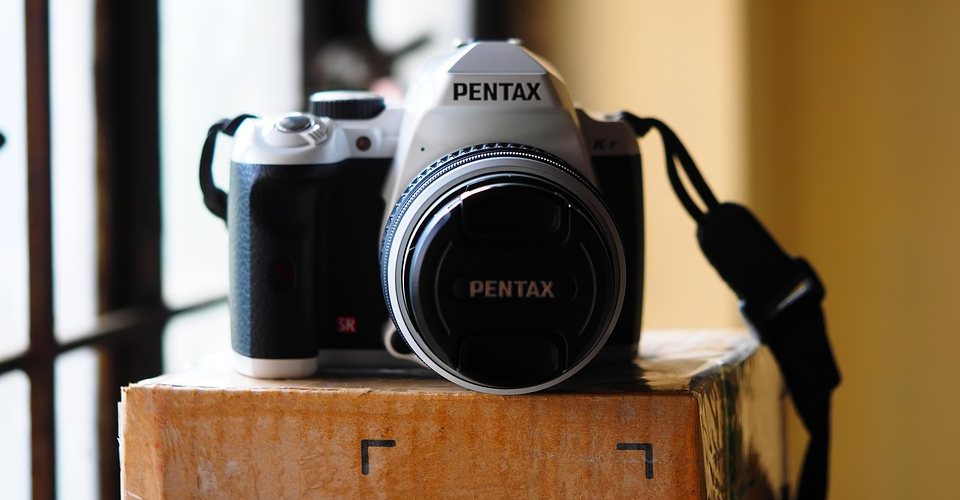6 Best Pentax K1 Lenses of 2020
The K1 and its successor are among Pentax’s most successful DSLRs. They’re renowned for exceptional color fidelity and low-light performance. The release of the original k1 also prompted Pentax to refresh its line of full-frame optics and enriched the world of photography with some of the sharpest, most reliable lenses of today.
Should you spend a premium to get Pentax originals? Are there cheaper aftermarket models worth your time? The answer to both questions is yes, and you’ll see why when you dive deeper into our best Pentax K1 lenses reviews. Whether you’re looking for a prime, zoom, or macro lens, your K1 and fans are in for a treat.
| Budget |
|---|
 |
| Sigma 35mm f/1.4 DG HSM Art |
| 4.0/5.0 |
| Type: Standard prime |
| Image stabilization: No |
| Excellent central sharpness and no distortion. |
| Check BH |
| Best Value |
|---|
 |
| Pentax HD FA 50mm f/1.4 SDM AW |
| 4.4/5.0 |
| Type: Standard prime |
| Image stabilization: No |
| Autofocus is smooth and accurate in bright light. |
| Check BH |
| Top Pick |
|---|
 |
| Pentax HD D FA 70-200mm f2.8ED DC AW |
| 4.7/5.0 |
| Type: Telephoto zoom |
| Image stabilization: No |
| Has an excellent all-around optical properties. |
| Check Amazon |
Pentax K1 Lenses Comparison Table
| Image | Product | Overall Rating | Image quality | Build quality | Features | Price |
|---|---|---|---|---|---|---|
 | Pentax HD D FA 70-200mm f2.8ED DC AW | 4.7 | 4.8 | 4.7 | 4.5 | Check Price |
 | Pentax HD FA 50mm f/1.4 SDM AW | 4.4 | 4.5 | 4.4 | 4.4 | Check Price |
 | HD Pentax-D FA 24-70mm f/2.8ED SDM WR | 4.5 | 4.6 | 4.5 | 4.3 | Check Price |
 | HD Pentax -D FA 15-30mm f/2.8 ED SDM WR | 4.4 | 4.3 | 4.4 | 4.4 | Check Price |
 | Tamron Telephoto SP AF 90mm f/2.8 Di Macro | 4.2 | 4.3 | 4.1 | 4.1 | Check Price |
 | Sigma 35mm f/1.4 DG HSM Art | 4.0 | 4.2 | 3.9 | 4.0 | Check Price |
1. Best Overall – Pentax HD D FA 70-200mm f2.8ED DC AW
Editor’s Rating: 4.7/5
The introduction of the first K1 full-frame camera called for a refresh of the K lens lineup. Pentax was eager to please, and the result is the HD D FA 70-200mm f2.8ED DC AW. This extraordinary telephoto zoom lens features unparalleled sharpness, manages color fringing superbly, and snaps to attention in the blink of an eye. If you’re unto portrait, wildlife, or sports photography, this is as good as it gets.
Overview of Features
As this is a full-frame telephoto lens with a wide max aperture, it’s no wonder that it’s both long and heavy. It dwarfs the K1, but luckily there’s a sturdy tripod mount to back it up. You can even rotate the mount sideways to accommodate switching between landscape and portrait modes. The AW in its name stands for all-weather as the lens has thirteen seals along with a host off coatings that repel rain, mist, dirt, and smidges. The lens elements have excellent glare reduction, and the long hood completely eliminates flares.
The HD D FA 70-200mm f2.8ED DC AW has responsive and versatile autofocus. You can exert control over it by using a toggle on the side. One position lets you fine-tune the focus after the AF is done, while another allows for adjustments while focusing is in progress without damaging the silent motor. You may also limit the focus distance in three stops to make zeroing in on subjects at various lengths speedier.
The lens’ optical properties are outstanding, sharpness being the most impressive. Central resolution is high, and the edges are barely softer. The results actually even out at 70mm and f/4! This trend continues as the focal range increases, meaning that you can shoot crystal-clear photos at the highest magnification even at f/22. That makes this lens one of the best sports shooters, period.
Other optical properties aren’t stellar, but they reflect the quality and price of the lens. Chromatic aberration is negligible and never reaches the 1.5 pixel mark. Barrel and pincushion distortions show up at extreme focal lengths but fall well within the k1’s ability to compensate when shooting JPEGs. The nine-bladed aperture and high f-stops guarantee attractive bokeh, and vignetting isn’t an issue.
What We Didn’t Like
All our criticism of this lens is superficial. The HD D FA 70-200mm f2.8ED DC AW is large and heavy, so lugging it around will take its toll. There’s no image stabilization, but a tripod is a must anyway for a lens of this size and range.
| Tech Specs |
|---|
| Dimensions: 3.6 x 3.6 x 8 in. |
| Weight: 3.9 lbs. |
| Type: Telephoto zoom |
| Minimum focal length: 70mm |
| Maximum focal length: 200mm |
| Maximum aperture: f/2.8 |
| Minimum aperture: f/22 |
| Minimum focus distance: 3.9 ft. |
| Field of view: 34.5° to 12.5° |
| Image stabilization: No |
| The Pros |
|---|
| World-class sharpness |
| Exceptionally well built and suitable for any weather |
| Quiet autofocus you can tweak manually in different ways |
| Excellent all-around optical properties |
| The Cons |
|---|
| Heavy and bulky |
| No image stabilization |
2. Best Value – Pentax HD FA 50mm f/1.4 SDM AW
Editor’s Rating: 4.4/5
A 50mm prime should be one of the first lens purchases for your K1. They’re great for architecture and landscape photos, produce natural results because of their field of view, and work well in low light due to wide apertures. You’ll get that and much more from the Pentax HD FA 50mm f/1.4 SDM AW, a lens from the same line as our overall winner.
Overview of Features
The Pentax HD FA 50mm f/1.4 SDM AW continues the trend of heavy Pentax lenses, this time as part of a more compact build that doesn’t require a separate tripod mount. The lens has more weight than other primes because of its all-metal weather-sealed construction and fifteen elements. Some of them reduce glare while others tackle color fringing and ensure flares are neutralized. The outer lenses are coated with a dirt and moisture-repelling filter.
Pentax has outfitted the prime with a new Supersonic Direct-drive Motor. It delivers more torque than previous models and delivers great results when the subject and background are easy to tell apart. It’s not the snappiest AF out there, but does speed in daylight is good enough for portraits and static scenes. Speed and accuracy drop in low light. They remain within acceptable levels, though, and the lens is quick to signal if it can’t find something to focus on.
Both this and our winning lens are part of the Star line of premium-grade glass with impeccable sharpness as their most obvious sign when it comes to optics. The Pentax HD FA 50mm f/1.4 SDM AW is a strong performer here, showing a crisp center throughout its aperture settings, while corner softness is most evident at f/1,4 and 1.8, values at which you’ll mostly e going for creamy bokeh anyway. You’ll get the best results at f/5.6 and f/8, but even the lowest value is seriously sharp.
Almost all other optical properties are good to excellent. Barrel distortion is slight and invisible unless you’re shooting something geometrical. Vignetting is more noticeable, especially at f/1.4. Closing the aperture to f/2.8 or more effectively neutralizes it. The lens makes fetching sunstars at f/11 and f/16 at the cost of a few unobtrusive lens flares.
What’s Bad About It?
The Pentax HD FA 50mm f/1.4 SDM AW is prone to lateral chromatic aberration in the form of purple and magenta fringing present on the edges of highly contrasting objects. Editing your photos in Lightroom can correct this to a large degree, but it’s a better idea to drop the aperture an f-stop or two and have the reduction happen organically.
| Tech Specs |
|---|
| Dimensions: 3.2 x 3.2 x 4.2 in. |
| Weight: 2 lbs. |
| Type: Standard prime |
| Focal length: 50mm |
| Maximum aperture: f/1.4 |
| Minimum aperture: f/16 |
| Minimum focus distance: 1.3 ft. |
| Field of view: 34.5° to 12.5° |
| Image stabilization: No |
| The Pros |
|---|
| A versatile lens at a reasonable price given its quality |
| Superb build quality and weather sealing |
| Autofocus is smooth and accurate in bright light |
| Exceptionally sharp |
| The Cons |
|---|
| Bulky for a standard prime |
| Pronounced chromatic aberration at wide apertures |
3. HD Pentax-D FA 24-70mm f/2.8ED SDM WR
Editor’s Rating: 4.5/5
Our third choice is a zoom lens that covers medium focal ranges and is as such suited for a wide range of subjects. The HD Pentax-D FA 24-70mm f/2.8ED SDM WR is slightly weaker in the optics department than the 70-200mm telephoto, but it’s another of Pentax’s distinguished performers when it comes to sharpness. Buy the two, and you’ll have most of your needs covered for decades to come.
Overview of Features
The HD Pentax-D FA 24-70mm f/2.8ED SDM WR is a standard zoom lens that’s all about balance. In the literal sense, it weighs an acceptable 1.8 pounds and is short enough not to make the camera feel front-heavy. It has a lesser degree of sealing than AW lenses yet remains usable in bad weather. The prominent focus and thin zoom rings have a knurled texture that allows for precise movement, and both respond smoothly. A lock prevents the lens from extending during travel, and you get a quality petal-shaped hood for less glare and more contrast.
This is one of the best K1 lenses if you’re looking for quick and responsive autofocus. Its motor is silent and executes focusing smoothly. Shooting in daylight lets you acquire a target in tenths of a second, while low-light conditions don’t cause it to hunt excessively. You may also make final manual corrections once autofocus is locked in. Focusing happens without lens rotation, which is great for using polarizing filters.
The HD Pentax-D FA 24-70mm f/2.8ED SDM WR is a step below the telephoto zoom in sharpness but still performs exceptionally well. Central sharpness remains high throughout the lens’ focal length and aperture settings. At the same time, the edges trail close behind or even match the center at 50mm for f/8 and f/11. Switching to f/16 or f/22 leads to a noticeable decline in quality that’s still miles ahead of the competition.
A wide aperture and nine blades help the lens create pleasant bokeh. Flaring is non-existent, so feel free to include the sun in landscape shots. Barrel distortion is negligible at 24mm, while pincushion distortion doesn’t impact photo quality in real-world situations.
Are There Drawbacks?
The HD Pentax-D FA 24-70mm f/2.8ED SDM WR shows strong vignetting at 24mm with the aperture completely open. Corners of photos shot at these settings re more than 3EV darker than the center. Luckily, decreasing aperture size to f/4 or f/5.6 improves the outcome significantly. There’s also distinct edge color fringing in the 50-70mm range at medium to low apertures.
| Tech Specs |
|---|
| Dimensions: 3.5 x 3.5 x 4.3 in. |
| Weight: 1.7 lbs. |
| Type: Standard zoom |
| Minimum focal length: 24mm |
| Maximum focal length: 70mm |
| Maximum aperture: f/2.8 |
| Minimum aperture: f/22 |
| Minimum focus distance: 1.3 ft. |
| Field of view: 84° to 34.5° |
| Image stabilization: No |
| The Pros |
|---|
| Excellent lens for landscape, portrait, and architecture photography |
| Great sharpness and flare resistance |
| Solid build quality |
| Excellent autofocus |
| The Cons |
|---|
| Strong vignetting at 24mm f/2.8 |
| Pronounced color fringing at higher focal lengths |
4. HD Pentax -D FA 15-30mm f/2.8 ED SDM WR
Editor’s Rating: 4.4/5
Wide-angle lenses excel at telling stories by capturing subjects and their wider surroundings. They’re your go-to option for street photography as well as landscapes and even food, provided the minimum focus distance is adequate. The HD Pentax -D FA 15-30mm f/2.8 ED SDM WR ticks all the boxes when it comes to reliable performance at ultra-wide to wide angles. It’s quick, straightforward, and you guessed it, tack sharp.
Overview of Features
The HD Pentax -D FA 15-30mm f/2.8 ED SDM WR is no exception in the line of bulky yet well-balanced Pentax lenses available today. It has a small built-in lens hood and a bulbous outer element treated with Super-Protect coating that tackles moisture buildup and fingerprints. The focus and zoom rings have the same features as those seen on the standard zoom lens. However, you’ll need some time to get used to the focus ring since it rotates in the opposite side.
A supersonic drive motor handles autofocus quickly and quietly. There’s no AF/MF switch, but you can make final adjustments once the autofocus stops moving. Distance values are displayed in metric and imperial units inside a bright window. This lens has a minimum focusing distance of 11 inches. Coupled with 0.20x zoom, that makes it a great performer when you want to get up close and personal for food or product reviews.
We’ve established that high-end Pentax lenses are wickedly sharp, and this one is no exception. It shines at 15mm where edge and central sharpness are neck and neck from f/5.6 to f/11. There’s a substantial disparity at both aperture extremes, but the fall-off in quality is something only pros are likely to notice. Results remain similar at 20 and 24mm while 30 mm sees uniformly sharp photos at the highest apertures while f/22 and f/16 remain sharper than expected.
There’s some pincushion distortion at 30mm that’s easy to correct in-camera. The same is true for chromatic aberration of the edge variant, while lateral CA is very well controlled. The HD Pentax -D FA 15-30mm f/2.8 ED SDM WR creates round, beautiful bokeh without fringing even when there’s a lot of contrast. Light fall-off is evident but not as severe as on the standard zoom lens.
What We Didn’t Like
The HD Pentax -D FA 15-30mm f/2.8 ED SDM WR doesn’t support filters because of its protruding outer glass. This makes it prone to flaring, along with a shallow hood that’s fixed in place. Barrel distortion is a common struggle for this type of lens and present at 15mm. It gives photos shot at that focal length a mild fish-eye appearance. Switching to 20mm gets rid of barrel distortion.
| Tech Specs |
|---|
| Dimensions: 3.9 x 3.9 x 5.7 in. |
| Weight: 2.3 lbs. |
| Type: Ultra-wide zoom |
| Minimum focal length: 15mm |
| Maximum focal length: 30mm |
| Maximum aperture: f/2.8 |
| Minimum aperture: f/22 |
| Minimum focus distance: 11 in. |
| Field of view: 111° to 72° |
| Image stabilization: No |
| The Pros |
|---|
| Maintains excellent sharpness throughout its focal and aperture range |
| Effective autofocus with a small minimum distance |
| Makes wonderful, round bokeh |
| Low chromatic aberration and pincushion distortion |
| The Cons |
|---|
| Pronounced barrel distortion at 15mm |
| Doesn’t accept filters |
5. Tamron Telephoto SP AF 90mm f/2.8 Di Macro
Editor’s Rating: 4.2/5
The K1 lenses we’ve talked about so far are all made by Pentax. There are cheaper aftermarket options out there, too, like Tamron’s excellent macro lens. It features above-average image quality, an adjustment dial that speeds up focusing, and a close focusing distance perfect for 1:1 shots of smaller subjects. The lens’ low-light performance is superb, as is the creamy bokeh you get when taking advantage of its bright aperture.
Overview of Features
Compared to other entries, the Tamron Telephoto SP AF 90mm f/2.8 Di Macro is small and light. It will take up little room in your camera bag, so it’s a no-brainer to carry the lens with you at all times. Its build quality isn’t up Pentax standards, but the lens elements are well protected. The textured focus ring is smooth to operate and can be pulled out slightly to lock the AF in place. The macro lens comes with a cylindrical lens hood but handles flare mitigation well on its own due to recessed elements.
The autofocus on this lens is nuanced. On the one hand, it is slow and emits an audible buzz, so the lens isn’t a good fit for documentary makers. On the other, it is superbly accurate and has no trouble distinguishing the subject from backgrounds under challenging light. The maximum focusing distance helps speed things up by letting you focus either between 11 and 15 inches or from 15 inches onward to infinity.
The Tamron Telephoto SP AF 90mm f/2.8 Di Macro maintains outstanding sharpness for a macro lens. Its sweet spot is between f/4 and f/5.6, where corner and central sharpness meet for award-winning results. There is a sharp quality drop when switching to f/22 due to diffraction. Still, other aperture settings offer excellent results.
Other optical properties range from good to great. Chromatic aberration is a factor and appears on the edges, but it’s nothing your K1 couldn’t handle. Distortion is minimal, as is the vignetting effect. While not uniform, the brightness is similar across the frame, which is excellent given that you’re pairing the lens with a full-frame camera.
What’s Bad About It?
The Tamron Telephoto SP AF 90mm f/2.8 Di Macro extends almost to 1.5x its size when focusing. You’ll have to keep that in mind when shooting close subjects as there’s a chance that the front glass will bump into them if you aren’t careful. The lens isn’t able to reliably focus if set to infinity. Your macro work won’t suffer for it, but this limitation means you won’t be able to use the lens as a telephoto prime.
| Tech Specs |
|---|
| Dimensions: 2.8 x 2.8 x 3.8 in. |
| Weight: 14.3 oz. |
| Type: Macro |
| Focal length: 90mm |
| Maximum aperture: f/2.8 |
| Minimum aperture: f/32 |
| Minimum focus distance: 11.4 in. |
| Field of view: 27° |
| Image stabilization: No |
| The Pros |
|---|
| Sharp macro lens at a great price |
| Accurate autofocus for small subjects |
| Useful focus distance limiter |
| No major optical issues |
| The Cons |
|---|
| Has trouble focusing at infinity |
| Extends when focusing |
6. Best Budget Option – Sigma 35mm f/1.4 DG HSM Art
Editor’s Rating: 4/5
Sigma is an aftermarket manufacturer that’s been giving the big boys a run for their money ever since the Art line release. The Sigma 35mm f/1.4 DG HSM Art is a wonderful example of how a lens can cost well under $1,000 and still deliver impressive results. It has balanced optics with no negative outliers and works well in low light or for situations where speed is essential.
Overview of Features
As it’s half the price of Pentax’s lenses, it isn’t surprising that Sigma’s lens isn’t built as sturdily. That’s not to say the build quality is bad; the lens has a metal body, and its glass is coated with moisture- and dust-repelling agents. No weather sealing is the worst offense and requires you to pay attention when connecting the lens to your K1. Other notable physical features include a ribbed focusing ring that’s easy to rotate and an AF/MF switch that won’t change states accidentally.
Sigma uses a HyperSmoth Motor to boost Art line autofocus performance past other aftermarket rivals. Its accuracy is good as the lens requires little contrast to pick subjects out from the background. It doesn’t travel back and forth before settling on a distance, either.
Sharpness is where the Sigma 35mm f/1.4 DG HSM Art starts to diverge from brand-name Pentax lenses. While its central and mid values keep up, corner softness is evident at large apertures. You’ll get the most balanced results if you stick to the f/4 – f/8 range. On the other hand, higher f values let you concentrate on the frame’s center and get away with softer corners masked by an artistic blur.
Bokeh is always a matter of personal taste, but this prime’s rendition of it is sure to prove divisive. The rings blurring at f/1.4 creates are onion-shaped and lack strong defining edges. Some photographers will find this endearing, while others insist on perfect circles. Other optics are easier to grade and above average as a whole. There’s some flaring and ghosting when shooting in direct sunlight. Color fringing is largely absent, and distortion is so slight that not even lab tests consider it a factor.
Are There Drawbacks?
The Sigma 35mm f/1.4 DG HSM Art needs a lot of light to focus correctly. You’ll have to drop the shutter speed if you want to maintain a high aperture, meaning that the lens is best used for stationary subjects and architectural photography. Vignetting is an issue as well.
| Tech Specs |
|---|
| Dimensions: 3 x 3 x 7 in. |
| Weight: 1.5 lbs. |
| Type: Standard prime |
| Focal length: 35mm |
| Maximum aperture: f/1.4 |
| Minimum aperture: f/16 |
| Minimum focus distance: 11.8 in. |
| Field of view: 63.4° |
| Image stabilization: No |
| The Pros |
|---|
| Great optics at a reasonable price |
| Excellent central sharpness |
| Autofocus is quiet and quick when there’s a lot of light |
| No distortion |
| The Cons |
|---|
| Has focusing issues in low light |
| Noticeable vignetting at f/1.4 |
Contents
- Pentax K1 Lenses Comparison Table
- 1. Best Overall – Pentax HD D FA 70-200mm f2.8ED DC AW
- Overview of Features
- What We Didn’t Like
- 2. Best Value – Pentax HD FA 50mm f/1.4 SDM AW
- Overview of Features
- What’s Bad About It?
- 3. HD Pentax-D FA 24-70mm f/2.8ED SDM WR
- Overview of Features
- Are There Drawbacks?
- 4. HD Pentax -D FA 15-30mm f/2.8 ED SDM WR
- Overview of Features
- What We Didn’t Like
- 5. Tamron Telephoto SP AF 90mm f/2.8 Di Macro
- Overview of Features
- What’s Bad About It?
- 6. Best Budget Option – Sigma 35mm f/1.4 DG HSM Art
- Overview of Features
- Are There Drawbacks?


Amazing! Its actually amazing paragraph, I have got much clear idea concerning from this paragraph.
EVERY Pentax lens is image stabilized. It is not a “con” for the lens itself not to offer it since the Pentax camera itself offers it. I understand being confused since that is not the Canikon way.